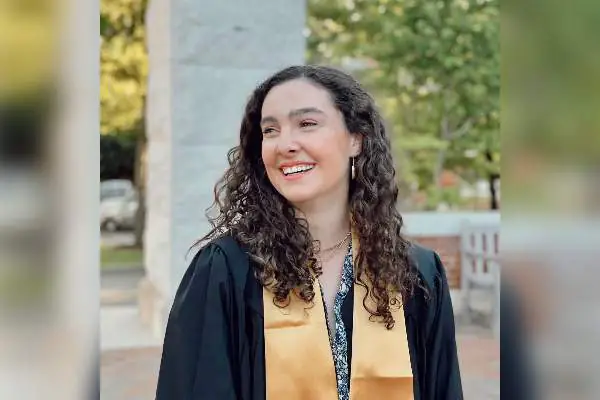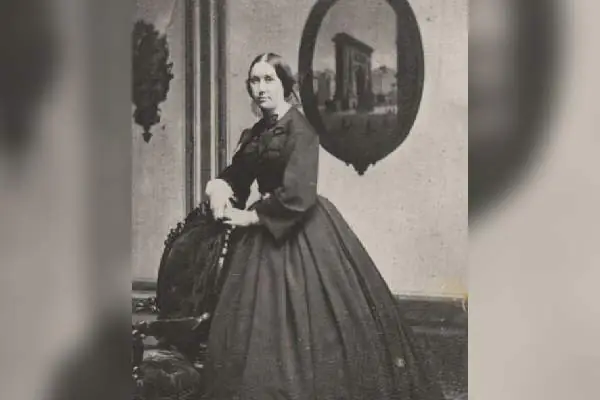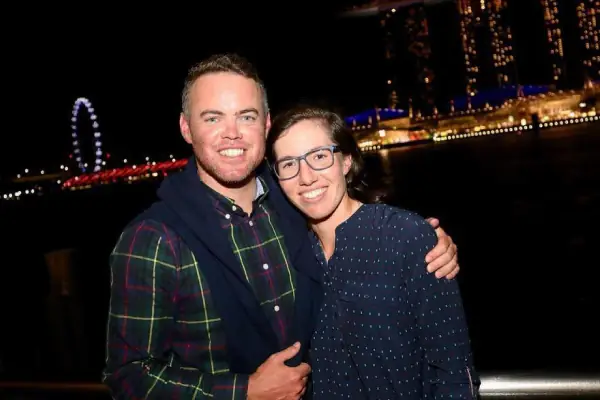Lene Vestergaard Hau Biography: Meet A Danish Scientist Who Stopped Light
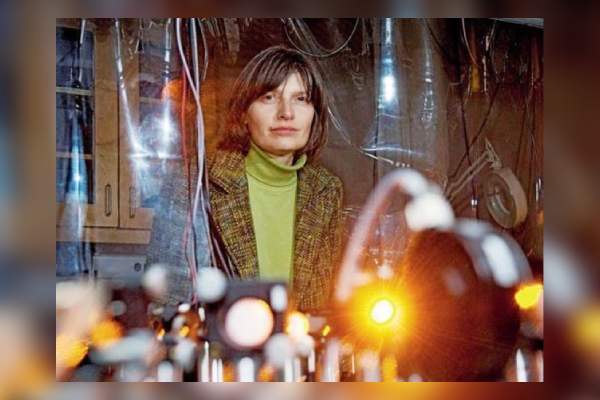
Lene Vestergaard Hau Biography. Image Source: Instagram
- Full Name Lene Vestergaard Hau
- Age 66 yrs
- Birth Date November 13, 1959
- Country Denmark
- Relationship Status Not Confirmed
- Nationality Danish
- Ethnicity White
- Profession Physicist, Educator
- Awards and honors Carlsberg Foundation's Research Award, George Ledlie Prize
- Education University of Aarhus
Whether it’s Madam Marie Curie or Ada Lovelace, women have always been a pivotal part of the scientific community. Likewise, Danish physicist and educator Lene Vestergaard Hau, a woman of a formidable reputation, outsmarted a branch of science traditionally dominated by men, physics.
Vestergaard made an astounding victory over darkness in the scientific community. She literally stopped the light and made significant contributions to science. Her work has helped to advance the understanding of quantum computing and nanotechnology.
This article about Lene Vestergaard Hau biography tells us about her immense love for science. It helps us understand how Dr. Hau came to be one of the few women who participated in physics.
Lene Vestergaard Hau’s Love for Physics
Lene Vestergaard Hau was born on November 13, 1959, in Vejle, Denmark. Her father was in the heating business, while her mother worked in a store. Neither of Lene’s parents had any background in science. However, both of them believed in giving their daughter the same advantages as their other children, a son. Lene later recalled that her parents’ support was crucial to her education.
Hau displayed a keen interest in science and mathematics from an early age. She grew up with a fascination for the natural world and a strong interest in science and mathematics. This passion for understanding the fundamental laws of the universe would eventually lead her to a remarkable career in physics.
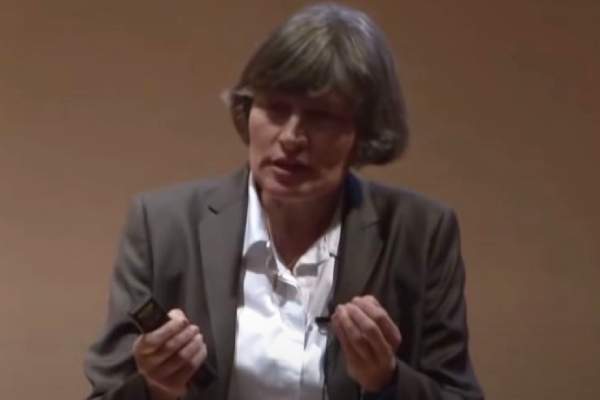
Lene Vestergaard Hau Biography. Image Source: Social Media
A prodigy who skipped 10th grade, she was immediately accepted at a ”gymnasium,” a European upper school roughly equivalent to the first two years of college in the United States.
Hau completed her undergraduate studies at the University of Aarhus, Denmark, where she earned a Bachelor of Science degree in 1984. She then continued her academic journey by pursuing a Ph.D. in physics at the same university. During her doctoral studies, she focused on studying the behavior of atoms at extremely low temperatures and in highly condensed states of matter. For the information, she received a Carlsberg scholarship which supported her as a graduate student for one year.
When she first entered Arhus University, Dr. Hau was initially bored by physics but loved mathematics. After a while, she discovered quantum mechanics and fell in love with the field.
ALSO READ: Mileva Maric Biography, Einstein’s forgotten wife and the Forgotten Genius.
Career and Research Contributions
Dr. Lene obtained her Ph.D. in 1991, and since then, her journey to a successful and illustrious career began in academia and research. She held various research positions at institutions such as the Harvard-Smithsonian Center for Astrophysics and the Rowland Institute for Science at Harvard University.
One of Hau’s most remarkable and groundbreaking achievements occurred in 1999 while she was a professor at Harvard University. Lene Vestergaard successfully managed to slow down and eventually completely stop a beam of light in a supercold cloud of sodium atoms. This achievement was a significant milestone in the field of quantum optics and marked a breakthrough in the study of light-matter interactions.
#OTD in 2001 Danish physicist Lene Vestergaard Hau published a paper in Nature describing how she had become the first person to stop a beam of light completely. Recently she has researched interactions between ultracold atoms and nanoscopic-scale systems. https://t.co/TQNHn1MzwP pic.twitter.com/WodjcmFNem
— On This Day She (@OnThisDayShe) January 25, 2022
In an extraordinary experiment, she and her team successfully slowed down and eventually stopped a beam of light and then later revived it using a supercold cloud of sodium atoms. This remarkable feat demonstrated the ability to control the speed of light and marked a significant advancement in the field of quantum optics.
The volume occupied by each ultra-cold sodium atom in Dr. Hau’s trap expands enormously, so much so that atoms in the trap are forced to overlap and merge into what physicists call a Bose-Einstein condensate (named for the theorists Satyendra Nath Bose and Albert Einstein), in which the atoms’ quantum wave functions are combined.
Dr. Lene Hau Actually Stopped Light Utilizing Bose-Einstein Condensation
The experiment utilized a phenomenon called Bose-Einstein condensation, where a large number of atoms are cooled to near absolute zero, causing them to enter a quantum state of matter. In this state, the atoms behave as a single entity, allowing researchers to manipulate their properties collectively.
Hau’s research opened up new possibilities in the realm of quantum computing and communication. The ability to control the speed of light has profound implications for the development of quantum memory and quantum information processing technologies.
In the 1991 paper, Dr. Hau, with Dr. Steve E. Harris (Stanford University) and two of Hau’s students, reported the results of their experiment in which a beam of laser light was slowed to the astonishingly low speed of 38 miles an hour (17 meters per second). (For information, light in a vacuum travels about 186,000 miles per second).
Further, Hau and her team in 2001 were able to stop the beam completely. Some of her later work based on these experiments led to the transfer of light to matter, then from matter back into light. This process proved to be an important implication for quantum encryption and quantum computing. Further, the experiment showed that physicist Hau did something that Einstein theorized was impossible.
Similarly, you might want to read about Ida Noddack biography, the profound German Chemist.
Honors and Awards
The 2002 Royal Danish Academy inductee, Dr. Vestergaard, has received numerous honors and awards in recognition of her exceptional contributions to science. Some of the prestigious accolades she has been awarded include the following:
| Year | Awards and Honors |
| 2019 | Dirac Medal And Lectureship. The University of New South Wales |
| 2018 | Lise Meitner, Distinguished Lecturer |
| 2011 | Honorary Alum 2011 |
| 2011 | Carlsberg Foundation’s Research Award |
| 2010 | H.C. Orsted Lectureship |
Further, Hau, for her extraordinary originality and dedication to her creative pursuits, was awarded the MacArthur Fellowship in 2001. The American Association of Physics Teachers gave her the Richtmyer Memorial Award in 2004. Other notable honors include the 2005 Benjamin Franklin Medal in Physics, the 2008 L’Oreal-UNESCO Awards for Women in Science, and the 2013 Kavli Prize in Nanoscience.
Legacy and Impact
Lene Vestergaard Hau’s groundbreaking work in controlling and manipulating the speed of light has profoundly impacted the field of quantum physics. Her research has paved the way for significant advancements in quantum computing, quantum memory, and quantum communication.
Beyond her scientific contributions, Hau has also been a dedicated mentor and educator. She has inspired and guided numerous students and researchers, fostering the next generation of scientists and helping to promote diversity and inclusion in STEM fields.
Hau’s journey as a physicist and her remarkable achievements have left an indelible mark on the scientific community. Her passion for pushing the boundaries of our understanding of the natural world continues to inspire scientists and researchers worldwide.
This article about Dr. Lene Vestergaard Hau biography is about an accomplished experimenter who is still recognized for her extraordinary scientific achievements.
Craine, A. G. (2009, July 15). Lene Hau | Biography & Facts. Encyclopedia Britannica.
Lene Vestergaard Hau. (n.d.). Maths History.
Lene HAU. (n.d.).
Lene V. Hau. (n.d.). DEPARTMENT OF PHYSICS.
Did you notice an error ?
Please help us make corrections by submitting a suggestion. Your help is greatly appreciated!





